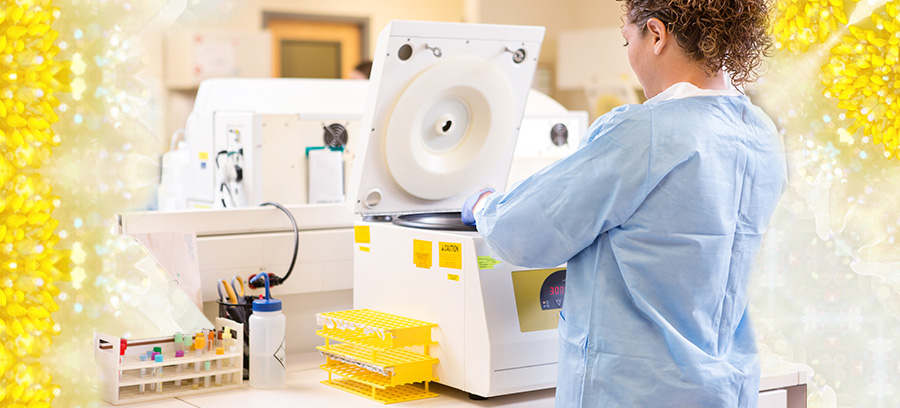Real time polymerase chain reaction (RT-PCR) is a unique molecular biological technique that has been utilized for the detection of pathogens with both high sensitivity and specificity. In this application, specific primers are used either individually or in combination, and has proven to be comparable and better than other techniques for the detection of one or more pathogens.
Extraction of nucleic acid sample (DNA or RNA) using common methods such as magnetic bead reagents. An extraction step is recommended for best results. Pathogen concentration can be correlated to number of Cycle threshold (Ct). The Ct. (cycle threshold) is defined as the number of cycles required for the fluorescent signal to cross the threshold (i.e. exceeds background level). The lower the Ct value, the higher the pathogen concentration.
When determining the best solution for designing molecular tests is to decide whether or not you will utilize monoplex (also known as singleplex) or multiplex PCR. This is an important decision due to the fact that the methods used differ in set-up and optimization. Below, we will explain the difference between the two, as well as provide pros and cons to both.
Monoplex RT-PCR
Monoplex PCR is a type of RT-PCR that contains a single primer that allows for the amplification of a single target in a single reaction tube/well. The primer is designed to be specific to the desired target so that it can be identified in the presence of other pathogens.
Multiplex RT-PCR
Multiplex PCR, in contrast, contains multiple primer sequences that allows for the amplification of multiple targets simultaneously in a single reaction tube/well. This is achieved by having the probes labeled with spectrally different fluorophores.
Since the newest RT-PCR analyzers on the market offer multiple color channels, Multiplex assays can be designed in groups of 2-5 targets per PCR well. The challenge in designing a multiple target assay in one PCR well is the possibility of signal interference between the different targets. This is commonly referred to as “cross-talk”.
Also, when multiplexing multiple targets per PCR well the design of primer is critical. All primers need to have the same annealing temperature for maximizing the amplification process and the amplicons must be markedly different in size in order to differentiate them from one another. In our experience, multiplexing of 2-4 targets per well is quite feasible and can be successfully achieved.
Although labs can develop this method internally, due to the complexity of this process, we recommend using kits that have been developed and validated by the manufacturer. Jant Pharmacal’s Viasure product line offers an extensive line of Multiplex panels including Respiratory, GI, Sexual Health, Monkeypox, Vector-Borne pathogens.
Multiplex RT-PCR is considered to be a cost-effective, rapid and reliable way to test for both small and large panels.
| Table 1. Comparison of Monoplex PCR and Multiplex PCR | ||
| Method | Advantages | Disadvantages |
| Monoplex RT-PCR | •Detects single specific target •Sensitive | •More time-consuming since one pathogen can be tested in a single well •Not ideal method for high-throughput screening |
| Multiplex RT-PCR | •Detects and differentiates multiple pathogens •Time-saving •Cost-effective •Reliable and faster detection for multiple pathogens in a single reaction | •More complex assay design when combining several targets per PCR well |
Monoplex RT-PCR Panels
When testing for larger panels such as Urinary Tract Infection or Antibiotic Resistance panels, the number of targets can range drastically from lab to lab. In these situations, panels can be built using monoplex RT-PCR (single target per PCR well), and may be preferable. Primer and probe reagents for each target can be added to individual wells on the plate. In order to increase number of clinical samples per run, 384 well plate format may be used. Additionally, a series of monoplex single target wells allows for easier customization. Since one color channel can be assigned to all targets, RT-PCR set up and validation may be easier.


